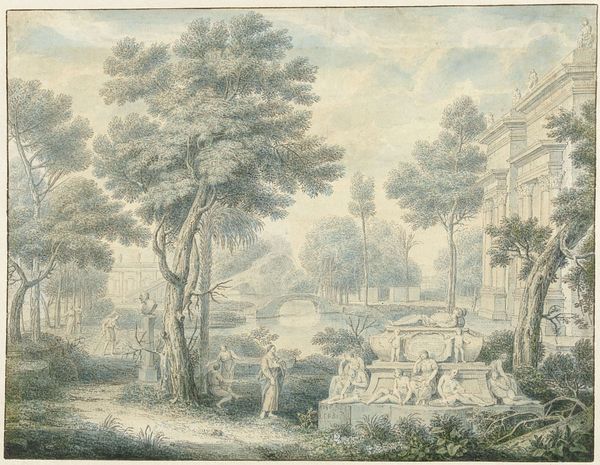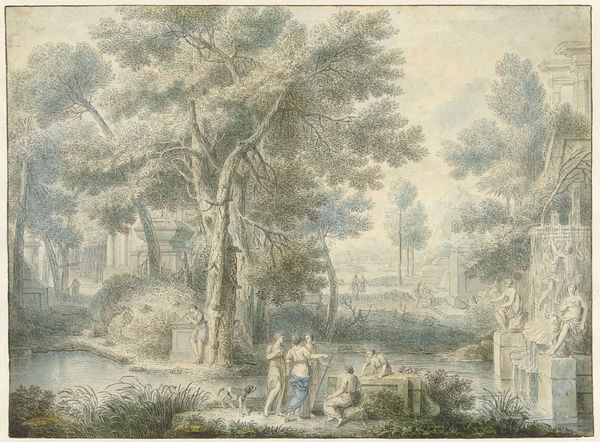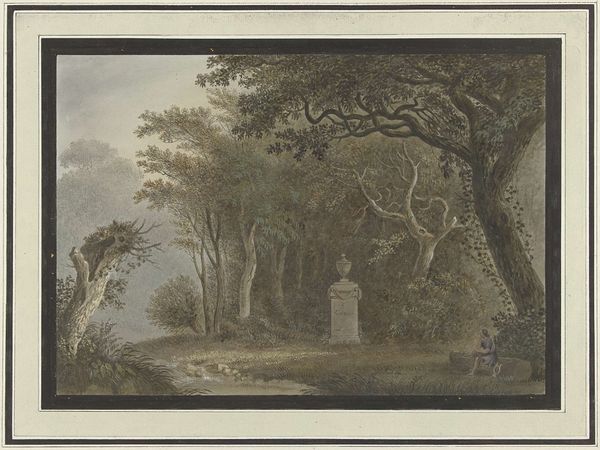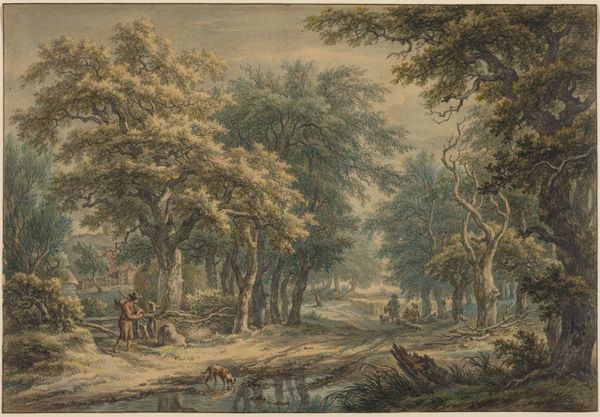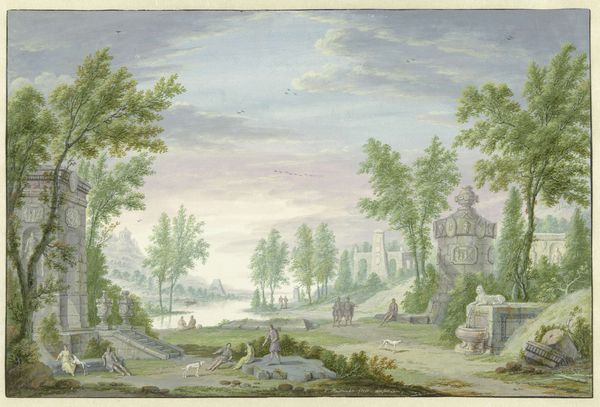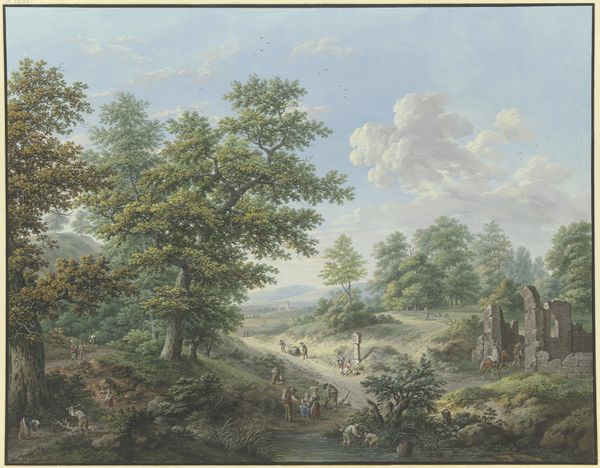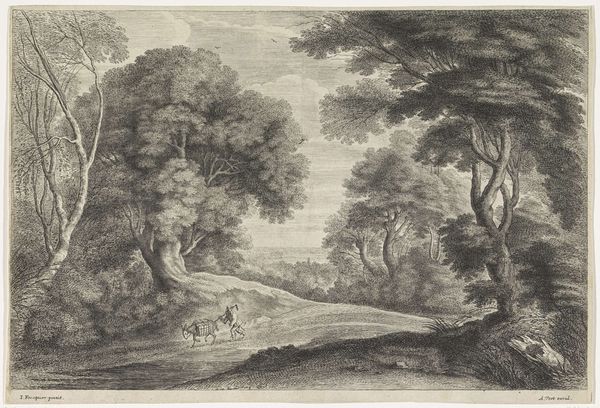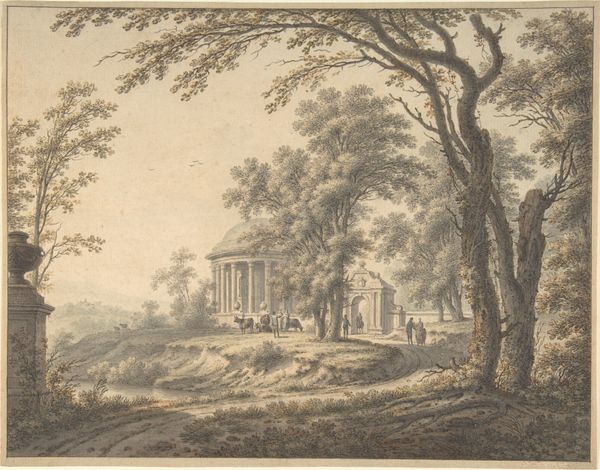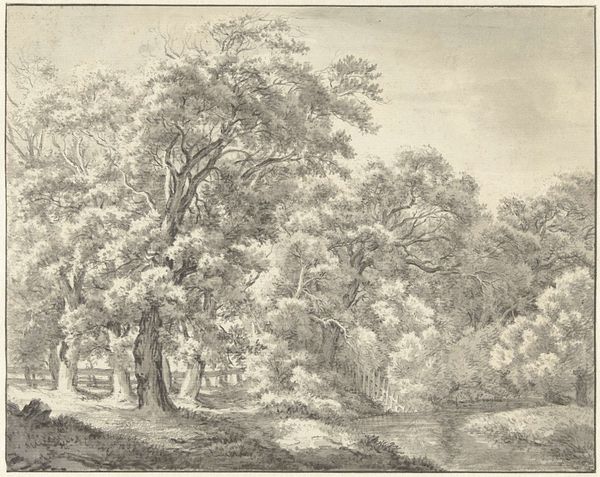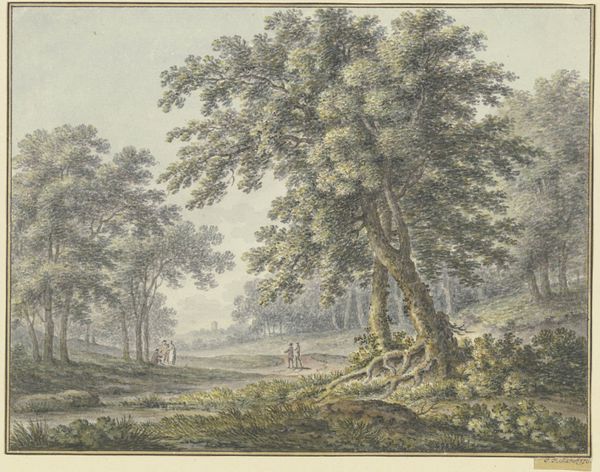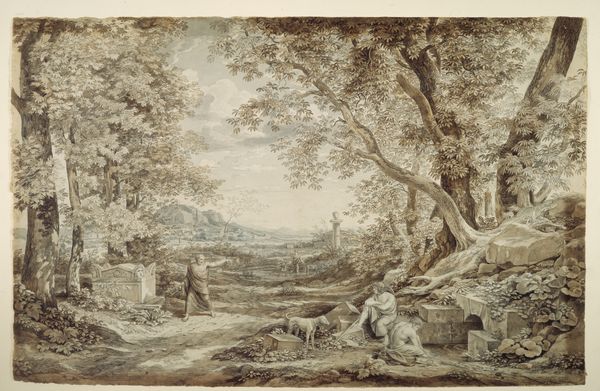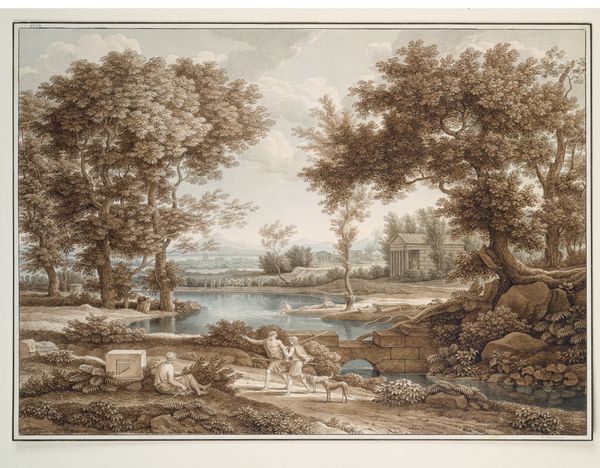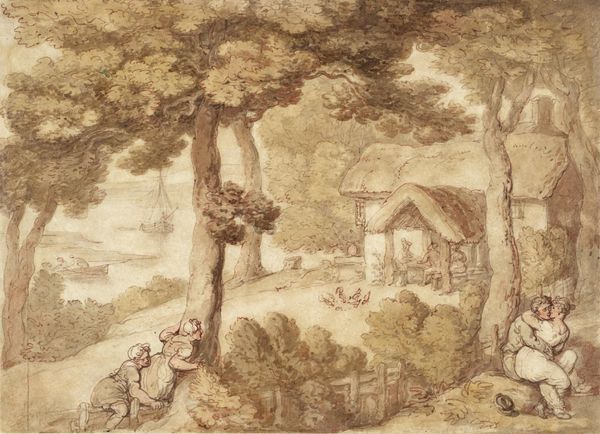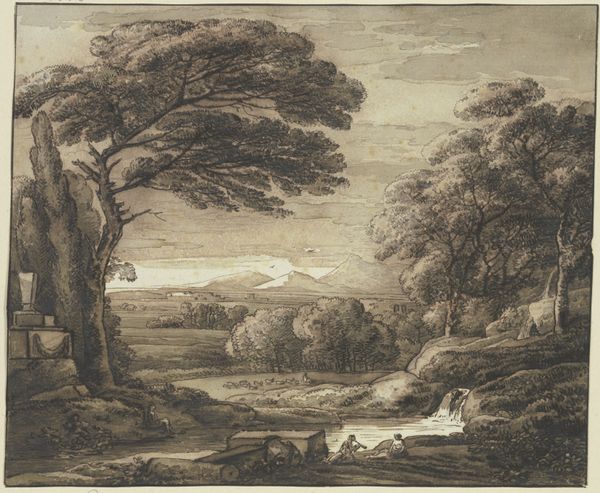
Dimensions: support: 250 x 541 mm
Copyright: CC-BY-NC-ND 4.0 DEED, Photo: Tate
Curator: Jonathan Skelton's "Greenwich Park, a Capriccio" offers a glimpse into 18th-century landscape art, rendered in delicate washes. Editor: It strikes me as a scene of manufactured tranquility, the winding path and the carefully placed trees suggesting a controlled, almost theatrical, encounter with nature. Curator: Indeed. Greenwich Park itself was a site of aristocratic leisure, but Skelton's depiction may also hint at broader social questions of land ownership and access. Who is this park for? Editor: And how is this landscape maintained? I'm curious about the labor involved in shaping this scene, the hands that cleared the paths, planted the trees, and kept it ready for viewing. Curator: It is important to consider that Skelton died very young, at only 23 years old. His vision of the park might reflect a yearning for an idealised pastoral existence, given the precarity of life in the 18th century. Editor: Right. The very act of rendering this scene in such painstaking detail, with ink and watercolor, speaks to a desire to tame and possess the landscape, to transform a wild space into a consumable image. Curator: Ultimately, Skelton's work prompts us to consider the park as both a physical space and a cultural construct, shaped by power dynamics and social ideals. Editor: A reminder that what seems natural is often carefully crafted.
Comments
tate 7 months ago
⋮
http://www.tate.org.uk/art/artworks/skelton-greenwich-park-a-capriccio-t08254
Join the conversation
Join millions of artists and users on Artera today and experience the ultimate creative platform.
tate 7 months ago
⋮
Skelton is an important figure in the emergence of a landscape watercolour tradition in Britain in the mid-eighteenth century but, like William Taverner (nos.7-8), a rather shadowy one. A profile of his life and work can only be pieced together by examining the locations depicted in his watercolours, which all date from between 1754 and 1758. In 1757 Skelton travelled to Italy. We know from the letters he wrote the next year from Rome and Tivoli to his patron that he was often working out of doors there painting in oil and watercolours from nature. However, this watercolour must have been made in the studio, as Skelton's inscription on the back states that 'the Parts of this Drawing are grouped together at Fancy'. Gallery label, September 2004
